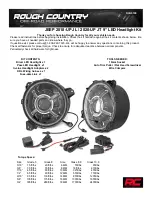
yellow
blue
4-14
D Check your mirrors, glance over your shoulder, and
start your left lane change signal before moving out
of the right lane to pass. When you are far enough
ahead of the passed vehicle to see its front in your
inside mirror, activate your right lane change signal
and move back into the right lane. (Remember that
your right outside mirror is convex. The vehicle you
just passed may seem to be farther away from you
than it really is.)
D Try not to pass more than one vehicle at a time
on two
-
lane roads. Reconsider before passing the
next vehicle.
D Don’t overtake a slowly moving vehicle too rapidly.
Even though the brake lamps are not flashing, it may
be slowing down or starting to turn.
D If you’re being passed, make it easy for the
following driver to get ahead of you. Perhaps you
can ease a little to the right.
Loss of Control
Let’s review what driving experts say about what
happens when the three control systems (brakes, steering
and acceleration) don’t have enough friction where the
tires meet the road to do what the driver has asked.
In any emergency, don’t give up. Keep trying to steer and
constantly seek an escape route or area of less danger.
Skidding
In a skid, a driver can lose control of the vehicle.
Defensive drivers avoid most skids by taking reasonable
care suited to existing conditions, and by not
“overdriving” those conditions. But skids are
always possible.
The three types of skids correspond to your vehicle’s
three control systems. In the braking skid, your wheels
aren’t rolling. In the steering or cornering skid, too
much speed or steering in a curve causes tires to slip and
lose cornering force. And in the acceleration skid, too
much throttle causes the driving wheels to spin.
A cornering skid is best handled by easing your foot off
the accelerator pedal.
If you have the traction control system, remember: It
helps avoid only the acceleration skid.
If you do not have traction control, or if the system is
off, then an acceleration skid is also best handled by
easing your foot off the accelerator pedal.
Summary of Contents for 1999 LeSabre
Page 6: ...First Edition for Buick LeSabre Owner s Manual 1999 yellowblue vi NOTES...
Page 110: ...yellowblue 2 54 The Instrument Panel Your Information System...
Page 113: ...yellowblue 2 57 Gage Cluster...
Page 163: ...First Edition for Buick LeSabre Owner s Manual 1999 yellowblue 3 37 NOTES...
Page 164: ...First Edition for Buick LeSabre Owner s Manual 1999 yellowblue 3 38 NOTES...
Page 344: ...yellowblue 7 42 Maintenance Record DATE ODOMETER READING SERVICED BY MAINTENANCE PERFORMED...
















































